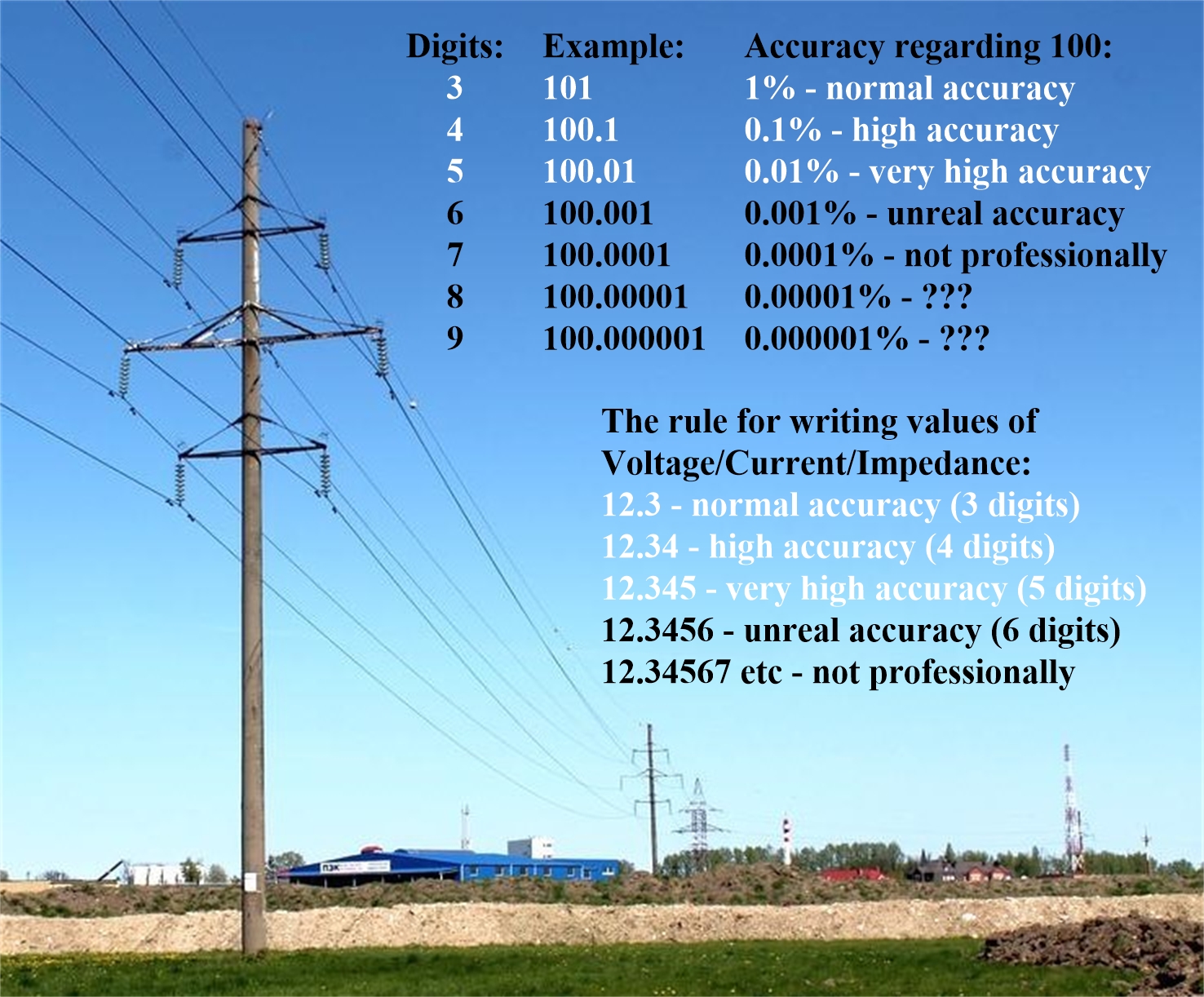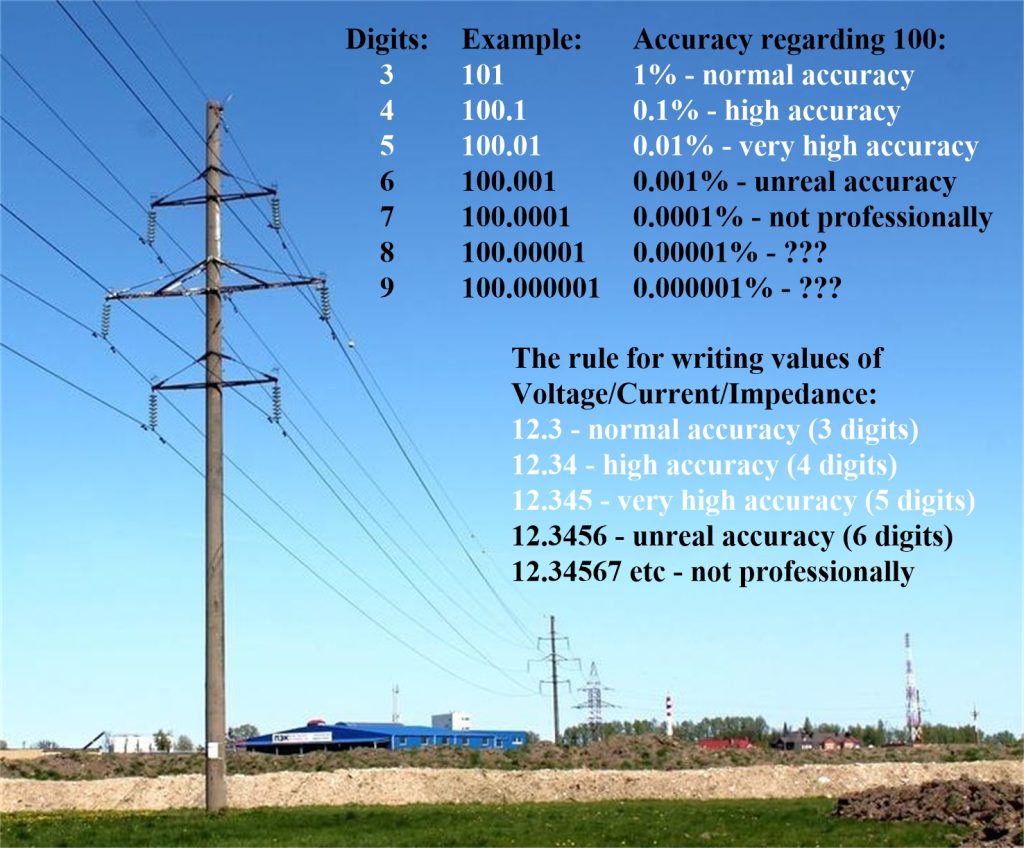
How many digits is enough to be fired?
We are absolutely sure of π=3.1415926535 and e=2.7182818284 – we use them in software. However, in our everyday life, we specify only 3 digits (3.14 and 2.72), and this is enough. Rarely we give 5 digits at once (3.1416 and 2.7183). If someone indicates 6 or more, we will consider it beyond reasonable.
How do we then relate to the fact that sometimes, without having accurate data on the parameters of the electrical network, we see the results of calculating voltage (U), current (I), impedance (Z), containing 10-12 digits at once? Let’s figure out why when writing U/I/Z, it is quite enough to specify 3 digits (4-5 max).

INITIAL DATA. The active impedance of Cu or Al conductors increases by 27% when heated from 20 to 90 degrees, but we do not know the real temperature of the conductors (the cooling depends on the environment/weather, and it’s difficult to predict). The soil thermal resistance (it directly affects the cooling processes of the cable) in the rainy season can fall by 10-50% compared to the dry season. The capacitance of the overhead line depends on the wire-to-ground distance, which varies depending on the terrain and wire temperature. The cable capacitance depends on the dielectric constant of XLPE-insulation, which can vary between 2.3 and 2.5 pu from reel to reel (a difference of 8%).
In these and other examples, it is clear that there is no way to guarantee that the parameters of the network and the environment included in the calculations are exactly as we assume. In the most optimistic case in the electric power industry, we know the initial data with an accuracy of 1%.
CALCULATION RESULTS. In general, the accuracy depends not only on the accuracy of the initial data, but also on the calculation methods and the nature of the problem being solved. Suppose calculation methods can be considered accurate, and they do not give additional error in the results. The situation is more complicated with the problem being solved – for example, in the case of resonant processes, changing the initial parameters of the RLC contour by 1% can change the result of U/I calculations by hundreds %. However, we will not consider such exotic options here, but focus on the basic tasks:
1. calculation of voltages and currents in normal modes;
2. calculation of short-circuit currents of the network;
3. selection of the cross-section of the conductors.
In the three listed tasks, it can be argued that if the initial data is known with an accuracy of 1%, then the calculation results will have an accuracy of 1% too. Accuracy of 1% – how many digits are there in the answer? These are only 3 digits (please look at the photo).
SUMMARY. If you are shown the results of calculations U/I/Z/R/L/C, which indicate more than 4-5 digits, then this is a disregard for the basic rules of electrical engineering. More than 4-5 digits in our industry is not a sign of accuracy, but a sign of insufficient professionalism.
